Energy
“It is intellectually dishonest not to acknowledge the … erosion of trust among global customers in Canada’s ability to deliver another oil pipeline.”
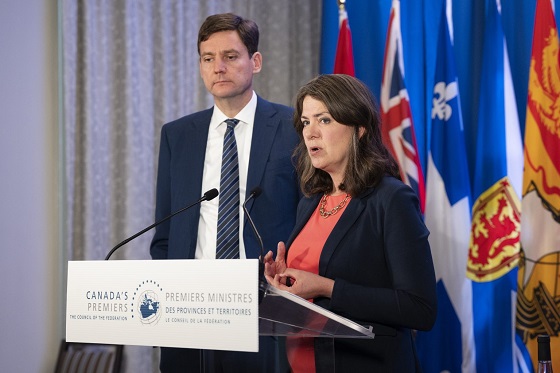
From Resource Works
Life in a federation is mostly hard, but worth the effort and frustration. We should keep that in mind when we face a question like: Should there be a second oil pipeline to Canada’s Pacific Coast?
We should also remind ourselves of the chain of events that led eligible voters in the Colony of British Columbia to choose Canada over the United States, and what the British North America Act stated about such decisions at that time and still today.
Section 92 of the Constitution stipulates that infrastructure projects that connect or run through provinces fall within federal jurisdiction. It clearly states that Parliament may declare a project which is wholly situated within one province to be “…for the general Advantage of Canada or for the Advantage of Two or more of the Provinces.”
Many crucial events took place between 1867 and 1871, the year B.C. entered Confederation. Canada and the United States were in a race across North America to the Pacific.
The United States had reached Washington State and Alaska by 1867, which posed a threat to Canada. In 1870, Canada acquired from the Hudson’s Bay Company the land that is today Manitoba, Saskatchewan, Alberta, Yukon, the Northwest Territories, and Nunavut. Both the United States and Canada competed for BC.
The Colony of British Columbia was having infrastructure debt problems, as Britain was becoming a less enthusiastic sponsor. Canada won the competition in part because of Upper Canada’s British roots, but the deal was sealed by promising to build a transcontinental railway.
B.C.’s entry to Confederation had everything to do with a transportation corridor. Ever since, Canada has relied upon B.C. to be an ever-expanding transportation and energy corridor, and the province has delivered. Today, B.C. hosts the largest and third-largest deep-sea ports in the country, as well as the only oil and natural gas pipelines to tidewater.

I agree with Premier Eby that BC’s contribution has been taken for granted, as have other western provinces. However, I disagree with the dismissive arguments he is making about Alberta’s goal to significantly increase oil production, in particular, relying on the point that there is no proponent.
Premier Smith, Federal Minister Hodgson, and potential proponents are all clearly acknowledging that fact. They also demonstrate a clear understanding of the requirements for adding the proposed project to the Major Projects List. The purpose of Alberta’s undertaking is an attempt to reach that threshold.
It is intellectually dishonest not to acknowledge the shattering of investor confidence and the erosion of trust among global customers in Canada’s ability to deliver another oil pipeline.
Both Premier Smith and Minister Dix appeared on CTV’s Power Play this past week. I cheered them both on and thought each did a good job. It was entertaining, but not political theatre. The debate was an expression of opposing viewpoints within a pluralistic and democratic country.

The argument that TMX is not at capacity is true but irrelevant. If the dredging is completed on schedule, the terminal will be capable of reaching full capacity as early as Christmas 2026, bringing total rail and pipeline capacity to approximately 4.8 million barrels per day. Production in Western Canada in July 2025 was 4,303,045 barrels per day.
Saskatchewan has set a 2030 target of 600,000 barrels per day, and projections indicate that Alberta’s 2034 production goals will reach 4.7 million barrels per day. This raises the need for an increased transport capacity to approximately 5.3 million barrels.
It is a fair point made by Premier Eby and Minister Dix that 10 years ago, a social licence trade-off was made with coastal First Nations in exchange for accepting LNG on the North Coast. Many things have changed since then that warrant a thoughtful second look.
There has been a general stagnation in living standards for something like eighty percent of the population. Public debt is rising to a level that is threatening many public services. The breakdown in relations with the United States is attacking our economy and sovereignty.
We have come to realize that we need billions of dollars annually to fortify the Arctic regions, protecting our northern populations and their resources from Russia and China.
Also, it has become apparent in the changing geopolitical landscape that energy resources and energy technology are essential currency for a mid-sized country to establish reliable trading partners and allies. It will get us back to the table internationally with credibility.
It is now clear that the industrialization of developing and emerging economies will not be halted. Canada has a choice to be an active, positive democratic participant or sit on the sidelines.
We now acknowledge that our proximity and dependence on the United States have defined our place in the world. We will need every asset and every comparative advantage to make that change. If we become less reliant on the United States, they will be less inclined to take us for granted.
The first proposal had the pipeline terminal at Kitimat. The project being worked on today proposes that it be changed to Prince Rupert. Many reports suggest that a route from Prince Rupert, and through Dixon Entrance, is the safest, even safer than the Burrard Inlet. This contention should be tested early in the process.

Most importantly, what has changed is that a growing number of First Nations are leading resource development. Joint regulatory processes, business, employment, and training opportunities, as well as access to rents and equity, have brought Indigenous Nations into partnerships with governments and corporations. The first equity opportunity came through the oil and gas industry.
It is reasonable to assume that the tanker ban decision made 10 years ago should be put under scrutiny. It is also sensible that potential proponents and supportive First Nations and Indigenous economic development groups engage with other First Nations in the early stages of developing an amended version of the Northern Gateway Pipeline.
It is also necessary to answer this question: What is the probability that Canada can successfully meet the consensus economic and sovereignty goals we have set for ourselves without expanding oil production?
Like it or not, oil outweighs natural gas and critical minerals in value when its entire value stream is considered.
One final thought. The NDP of old would not have objected to public ownership of an oil industry company. We should learn from the Norwegian example. Norway sold its leading oil and gas company in 2001 on the Oslo and New York Stock Exchanges. They did so because their reserves are limited, and they decided to acquire international assets, including in Canada.
Since then, Equinor has significantly expanded its asset base, and private companies now own approximately one-third of the company’s shares. Despite top-level environmental regulations, and the fact that the people of Norway hold two-thirds of the shares, private investors have confidence.
Jim Rushton is a 46-year veteran of BC’s resource and transportation sectors, with experience in union representation, economic development, and terminal management.
Energy
In the halls of Parliament, Ellis Ross may be the most high-profile advocate of Indigenous-led development in Canada.
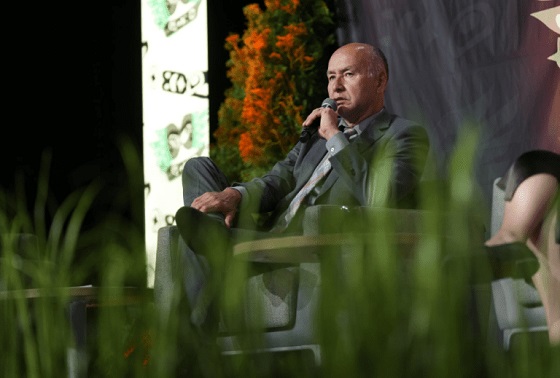
From Resource Works
“We’re not talking about reconciliation anymore…we’re talking about prosperity, and making sure it lasts.”
Ellis Ross stepped onto the stage at the Vancouver Convention Centre last year. He didn’t reach for notes, and spoke plainly to the audience of business leaders, chiefs, and policymakers gathered for the Indigenous Partnerships Success Showcase (IPSS).
“I’m very proud to say that my band, the Haisla Band, is no longer talking about unemployment, poverty, reconciliation,” Ross said. “We’re talking about the management of wealth.”
Ross’s message was equal parts challenge and triumph, and was followed by a standing ovation for a man who has lived the slow climb from the margins to the mainstream. Once a water-taxi operator in Kitamaat Village, he is now one of the country’s most influential Indigenous political figures.
As he returns as a featured guest to this year’s IPSS, Ross embodies the event’s core theme: Shared Prosperity Now.
Born and raised in the Haisla Nation near Kitimat, Ross spent his early life in a community scarred by unemployment and a lack of opportunity.
“We had nothing,” Ross told the Arc Energy Ideas podcast last year. “We were begging for money, begging for infrastructure. We were one of the poorest bands in British Columbia.” Under his leadership, that changed forever.

As Haisla chief councillor from 2011 to 2017, Ross helped transform his community through industry partnerships rooted in resource development. He rejecting the old idea that development was a natural enemy of culture, and steered the Haisla into the energy economy on their own terms by embracing liquefied natural gas (LNG).
The Cedar LNG project, co-owned by the Haisla Nation and Pembina Pipeline, will become the largest Indigenous-majority-owned energy project in Canada’s history.
“It will have one of the lowest carbon footprints in the world,” said Crystal Smith, Ross’ successor as Haisla Chief Councillor. Cedar LNG is scheduled to begin operation in 2028.
For Ross, participation means power.
“If you uplift an Aboriginal community, the biggest beneficiaries, apart from First Nations, are the rest of British Columbia,” he said at IPSS in 2023. “We’ve got no malls or car dealerships on reserves. We spend it in our neighbouring communities.”
Ross’s journey hasn’t been without conflict. Writing in the Times Colonist in 2020, he warned of foreign-funded activists “hijacking our future” by dividing Indigenous communities and undermining resource partnerships.
“The last thing any of us need is intervention from foreign groups that want to hijack our future for their own objectives,” he wrote, condemning the influence of U.S. foundations funnelling money to anti-development campaigns.
He is vehemently opposed to “distraction politics”, and it became a hallmark of Ross’s political career. As MLA for Skeena from 2017 to 2024, Ross built a reputation for straight talk. He was eager to defend both workers and environmental standards for the modern resource industry.

With a pragmatic style, he gained admiration from both business leaders and former premier Christy Clark, who has praised Ross because he “fought for an LNG industry that will be the cleanest, the greenest, and the safest anywhere in the world.”
By early 2024, Ross announced his move to federal politics, saying he wanted to take “the principles I’ve developed over the last 15 years” to Ottawa.
Now the Member of Parliament for Skeena-Bulkley Valley, he’s now one of the most prominent Indigenous voices in the House of Commons, and one of the few with deep experience in both community governance and heavy industry.
Recently, Ross said he plans to hold the federal government to its promise of making Canada an “energy superpower.”
“For the area and for Canada, I want to hold this government accountable for those words,” he told the Prince George Citizen. “Projects like LNG Canada and Cedar LNG can show the world how Indigenous leadership and environmental responsibility go hand in hand.”
Ross’s attendance at IPSS 2025 comes at a moment when Indigenous participation in major projects is reshaping the national economy.
More than two dozen First Nations now hold equity in energy, mining, or infrastructure developments. It is proof that reconciliation, in his view, must be measured not in lofty statements but in actual ownership.
“You’ve got to leave a lot of those old narratives at the door,” he told delegates. “We’re not victims. We’re builders.”
Now, from the carpet of Parliament Hill to the polished floors of the Vancouver Convention Centre, Ellis Ross continues to speak for both the Haisla and the wider coalition of Indigenous and non-Indigenous Canadians who believe in growth through partnership.
As IPSS Event Lead Margareta Dovgal put it, “He bridges worlds—the boardroom, the band office, and the floor of the legislature.”
When Ross steps back onto the IPSS stage this November, expect the same mix of candour and conviction that has defined his career. “
We’re not talking about reconciliation anymore…we’re talking about prosperity, and making sure it lasts.”
Alberta
Alberta government’s pipeline proposal reveals truth nature of oil and gas opponents
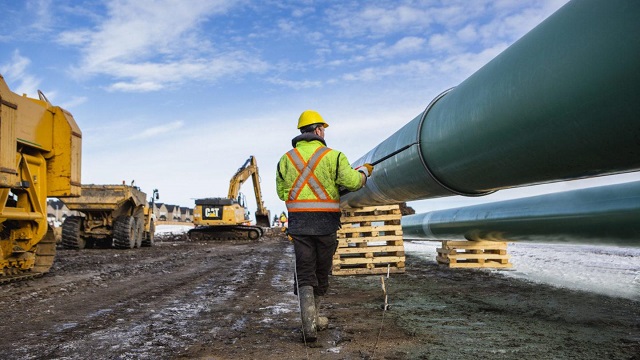
From the Fraser Institute
Earlier this month, when Alberta Premier Danielle Smith announced that her government, in conjunction with major players in the oilsands, would propose a pipeline to carry Alberta’s products to tidewater off Canada’s west coast, she may have called the Carney government’s bluff (and the bluff of any other government that might be bluffing about pipelines).
In June, the Carney government passed Bill C-5 to purportedly eliminate the gridlock that prevents the construction of major energy infrastructure. But the government’s first list of projects to get the Bill C-5 treatment did not include any oil or gas pipelines (which was no surprise, in light of Canada’s hostile regulatory landscape that deters private-sector companies from investing time and money). In response to Smith’s announcement, federal Natural Resources Minister Tim Hodgson said any proposal for a pipeline must include “meaningful consultations with Indigenous rights holders” and close partnerships with “all affected jurisdictions.”
Meanwhile, in British Columbia, one of those “affected jurisdictions,” Premier David Eby is essentially denying that Smith’s proposal has significant private-sector support, implying it will require federal spending and that it’s a “direct threat to the kind of economy we are trying to build.” And yet, back in June, Eby said he was open to the idea of another privately-funded pipeline to tidewater in northern B.C., noting only that he doesn’t support “tens of billions of dollars in federal subsidy going to build this new pipeline when we already own a pipeline that empties into British Columbia,” referring to the Trans Mountain pipeline. In other words, it sounds like Eby has changed his tune.
In Quebec, Premier François Legault said in February that his government might be open to a proposed oil pipeline (Energy East) from Alberta—“For the moment, there is no project on the table,” he said. “If there is a project on the table, we will look at it.” Fast-forward to today. When asked about Smith’s proposal, leader of the Bloc Quebecois, Yves-François Blanchet (a close ally of Legault’s), said “Let’s imagine that Quebec is an independent and free country. We will go on the world stage to say that Alberta is destroying the environment of the whole planet.”
Clearly, while the federal government and key provincial governments have implied that they’re open to new pipelines (albeit, under an ever-changing roster of conditions), Premier Smith’s proposal has seemingly revealed the truth. They sound like the same implacable opponents of oil and gas development, in submission to the international climate change movement’s zero-tolerance policy for fossil fuels, that have dominated in Canada for a decade.
-

 COVID-192 days ago
COVID-192 days agoDevastating COVID-19 Vaccine Side Effect Confirmed by New Data: Study
-

 Red Deer10 hours ago
Red Deer10 hours agoThe City of Red Deer’s Financial Troubles: Here Are The Candidates I Am Voting For And Why.
-

 Business2 days ago
Business2 days agoCanada Post is failing Canadians—time to privatize it
-

 Haultain Research2 days ago
Haultain Research2 days agoInclusion and Disorder: Unlearned Lessons from Palestinian Protests
-

 Business2 days ago
Business2 days agoGovernment distorts financial picture with definition of capital
-
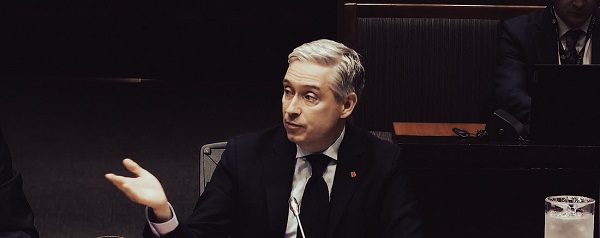
 Business2 days ago
Business2 days agoFinance Minister ducks deficit questions, talks down to critics, and rebrands reckless spending as ‘transparency’.
-
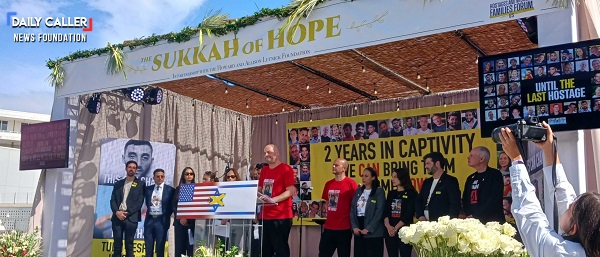
 Daily Caller1 day ago
Daily Caller1 day ago‘We’re Really, Really Close’: Freed Gaza Hostages, Relatives Have High Hopes For Trump’s Peace Plan
-

 COVID-191 day ago
COVID-191 day agoConservative MP slams Freedom Convoy leaders’ sentencing as ‘political persecution’







